Crucial P5 Plus 1TB Performance Testing
We test using both the default smaller test size as well as larger test sets on our benchmarks. This allows us to see the difference between lighter and heavier workloads.
CrystalDiskMark x64
CrystalDiskMark is used as a basic starting point for benchmarks as it is something commonly run by end-users as a sanity check.
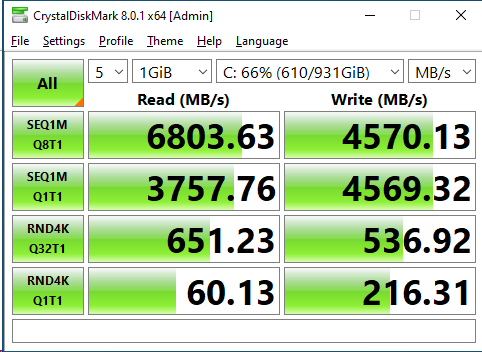
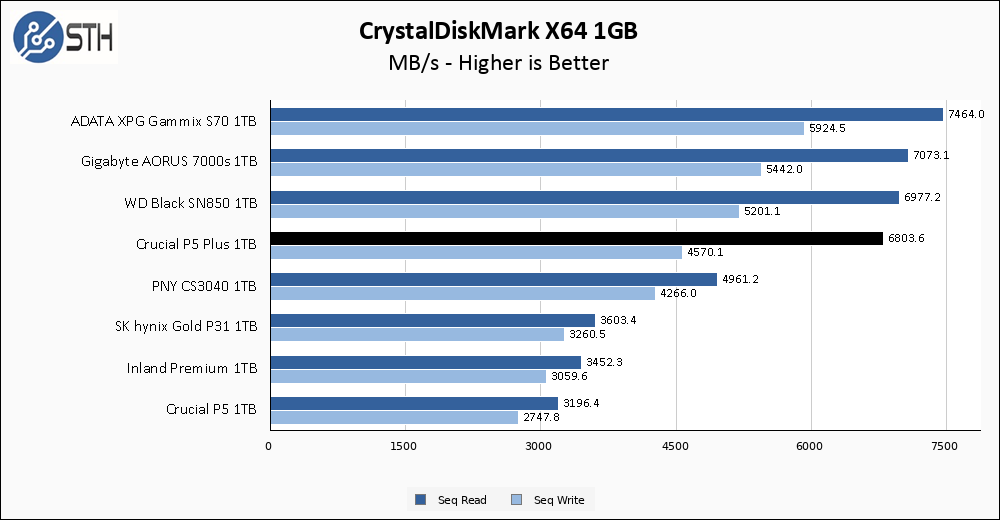
It is immediately apparent that write speeds and scores are a potential area of criticism with the Crucial P5 Plus; quite often CrystalDiskMark’s 1GB test is the only benchmark where drives will hit their rated sequential performance numbers, and when it comes to write speed the P5 Plus misses the mark by a bit. On the other hand, read speeds manage to surpass rated specifications by a minor margin, so there is some good news there.
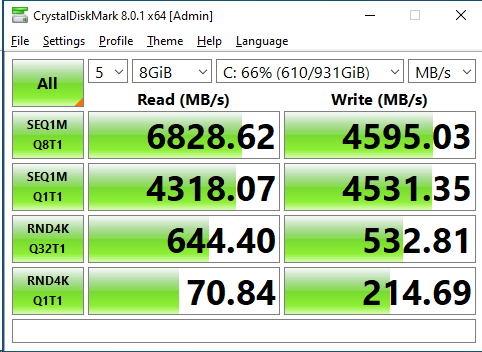
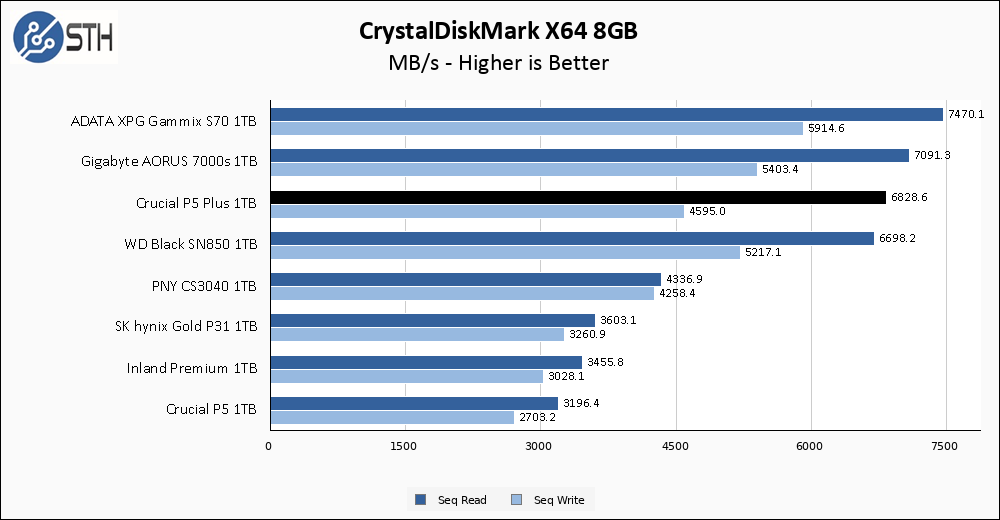
Performance drop on the larger CrystalDiskMark test is negligible.
ATTO Disk Benchmark
The ATTO Disk Benchmark has been a staple of drive sequential performance testing for years. ATTO was tested at both 256MB and 8GB file sizes.
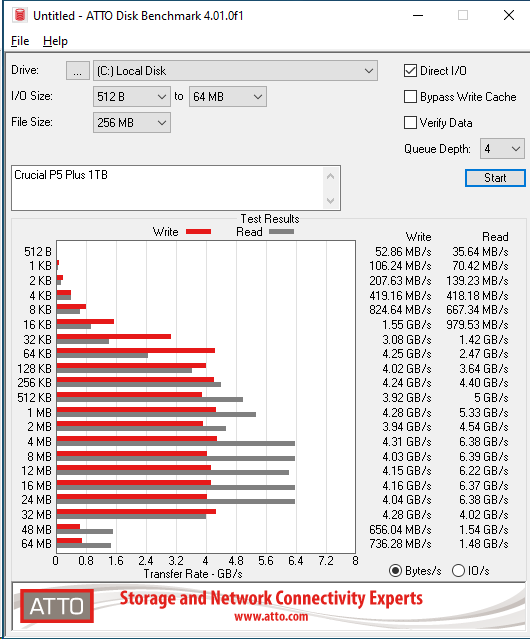
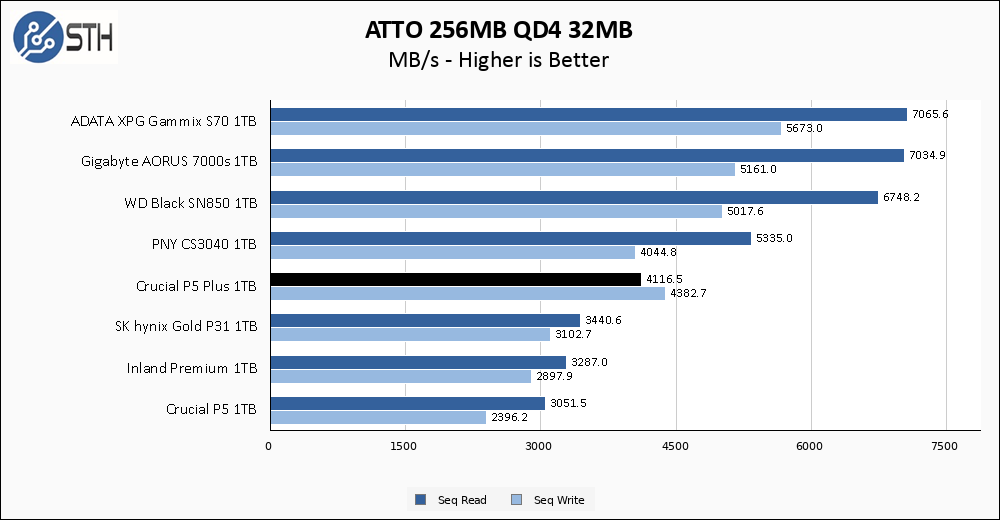
ATTO performance for this drive is inconsistent across the whole run. We take our graph datapoint from the 32MB result line, but both read and write speeds fluctuate more than most drives I review. These results are also not consistent, with significant variability in results from run to run. Taking these numbers on face value, read speeds have dropped to the bottom of the PCIe 4.0 pack, while write speeds hold up better.
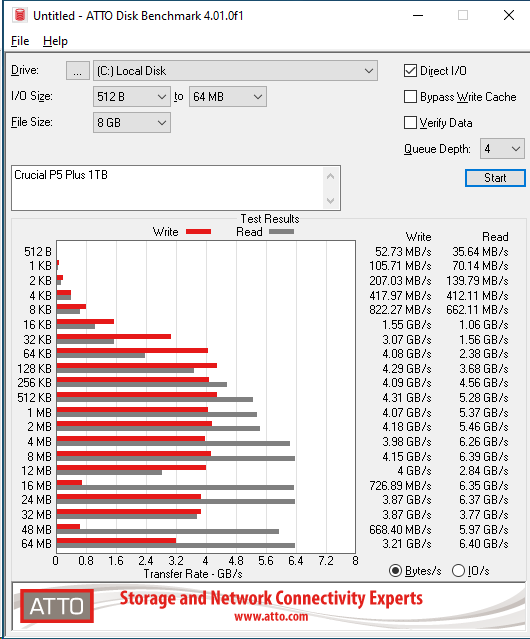
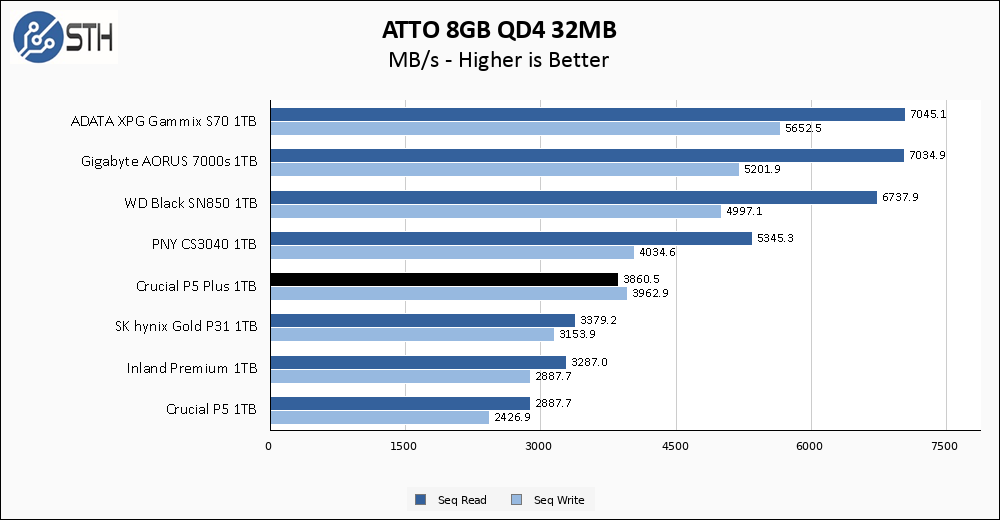
ATTO test result instability rears its head again. The Crucial P5 Plus is simply not able to put out consistent results in ATTO; I consider the results themselves almost worthless, the true value is the knowledge of the performance inconsistency.
Anvil’s Storage Utilities
Anvil’s Storage Utilities is a comprehensive benchmark that gives us a very in-depth look at the performance of drives tested. This benchmark was run with both a 1GB and 8GB test size.
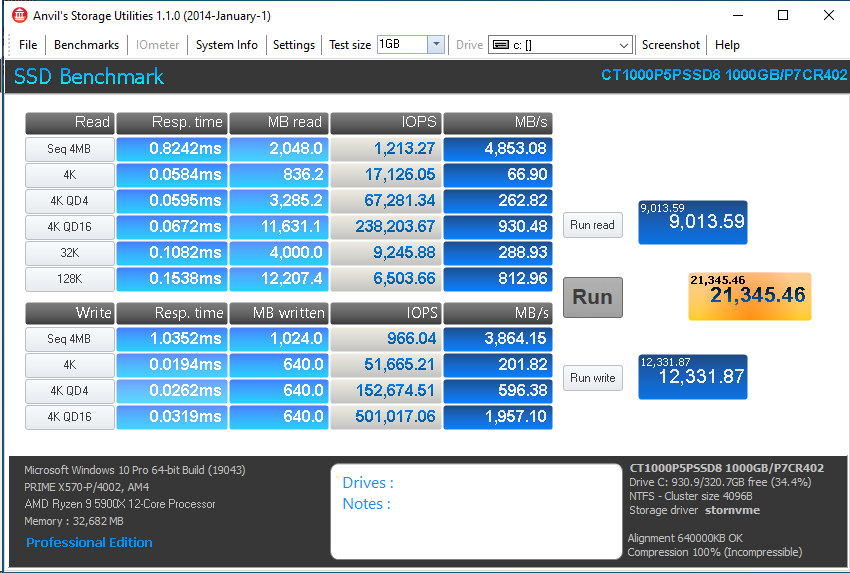
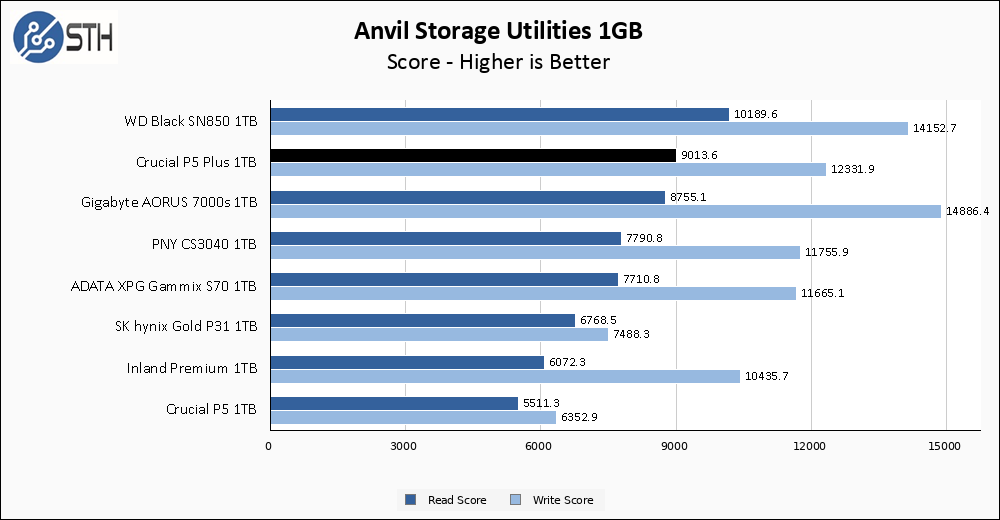
Anvil represents a return to form for the Crucial P5 Plus 1TB, turning in good results both for read and write scores.
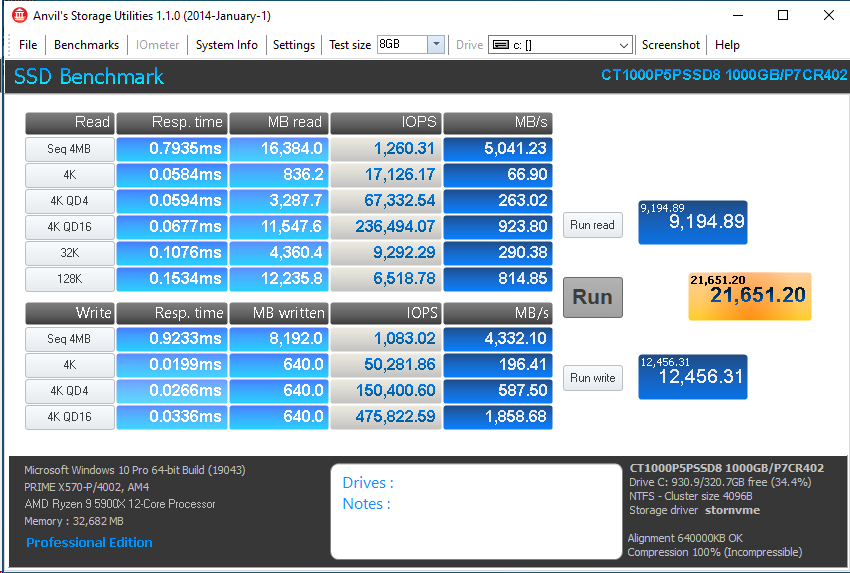
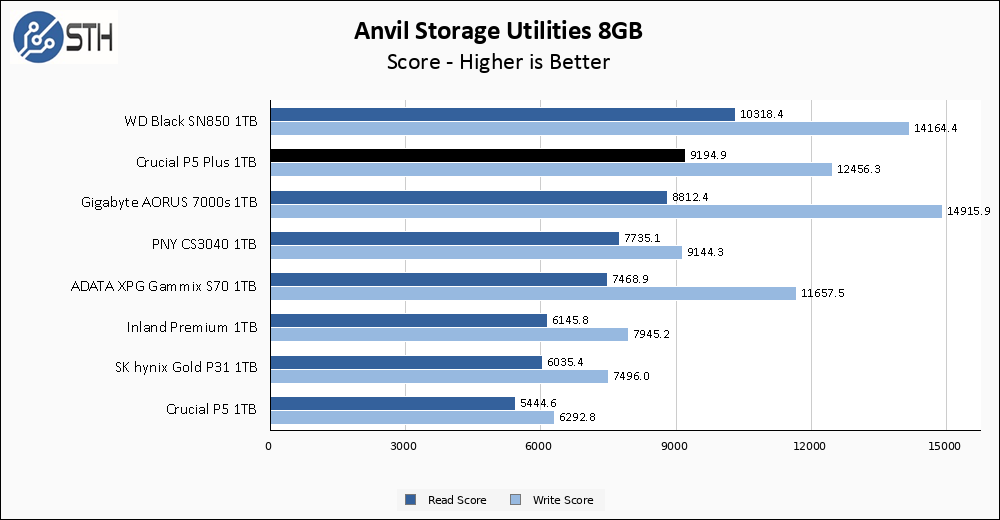
The Crucial P5 Plus holds its ground very well in Anvil’s larger test, actually managing a small improvement to both read and write scores versus the smaller test.
AS SSD Benchmark
AS SSD Benchmark is another good benchmark for testing SSDs. We run all three tests for our series. Like other utilities, it was run with both the default 1GB as well as a larger 10GB test set.
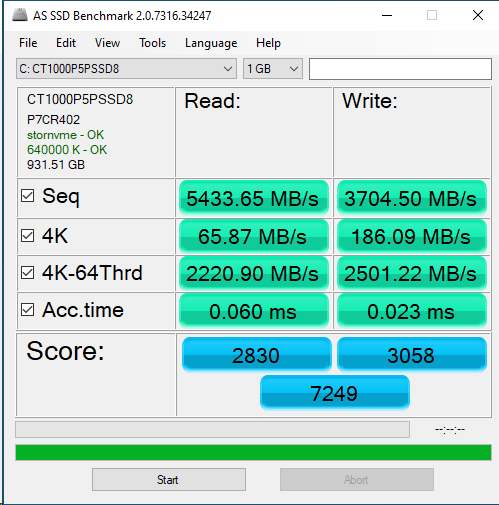
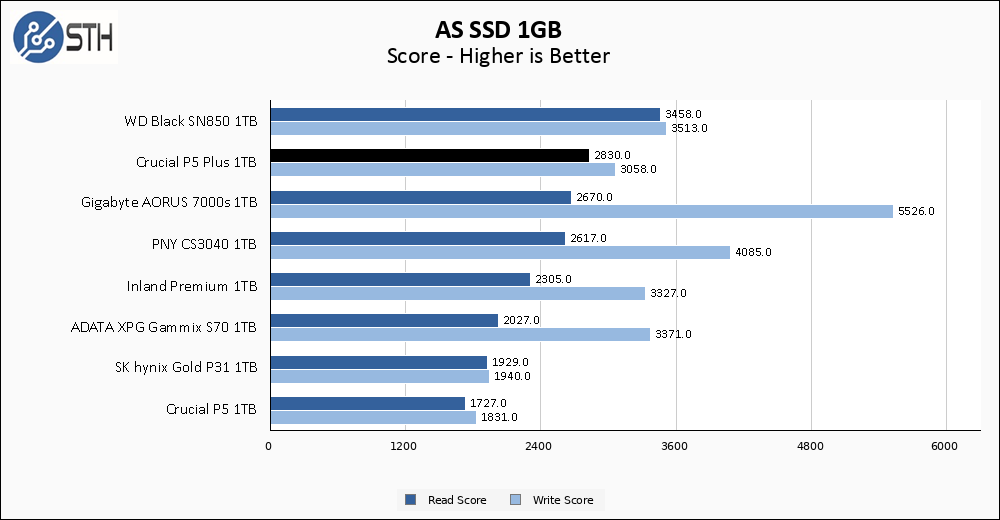
AS SSD results are decent. The Crucial P5 Plus is near the top of the chart for read score, while simultaneously turning in the lowest PCIe 4.0 write score on our chart.
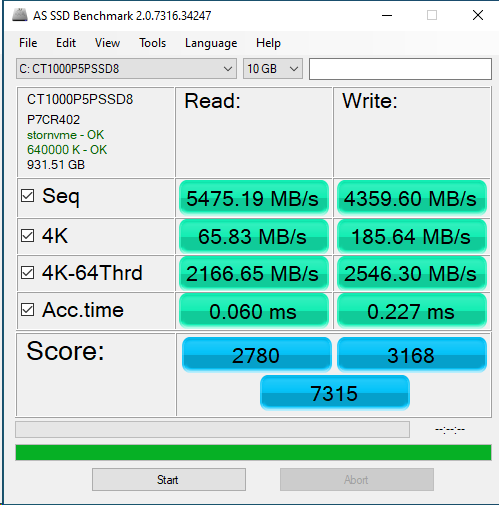
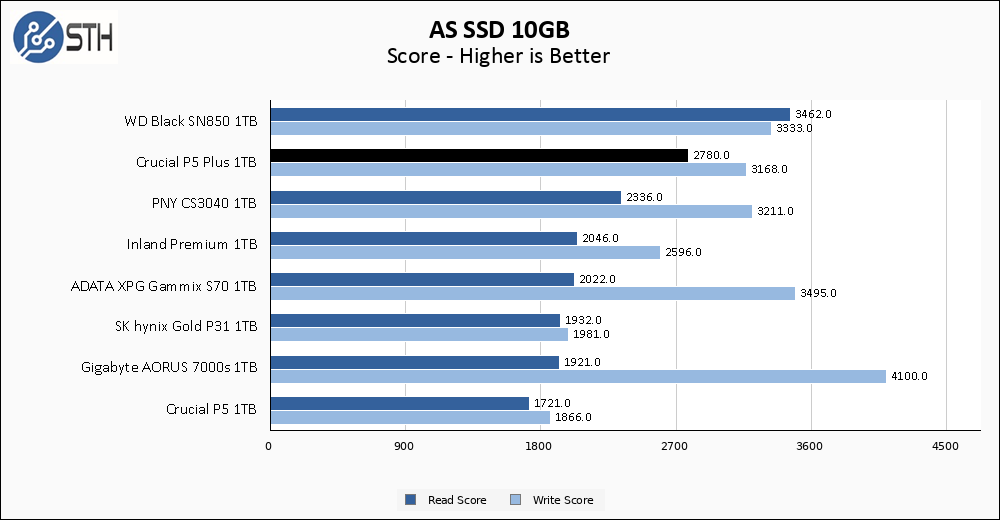
If I was looking for a single test result that impresses me across my suite, this would be the one. The Crucial P5 Plus 1TB manages to improve its write score when running the larger benchmark, which is highly unusual for drives I test. Unfortunately, it is a minor improvement and not enough to quite catch up with the other PCIe 4.0 SSDs in our dataset.
SPECworkstation, thermals, and our conclusion are up next.



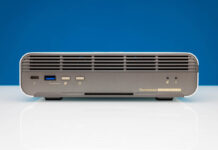
Are the fluctuations and peaks in the sustained write performance graph the result of thermal throttling or cache effects?
What about “Integrated power loss immunity” feature? Is there supercapacitor on board, or how is it working? What I have understood, is that this feature is not common on M.2 drives, or perhaps not exist on any other M.2 drive. I think this would be superb drive for low budget server.
Qué consumo tiene en reposo? parece ser que es muy alto, sobre 1,3w mientras que los de la competencia están por 0,003w.